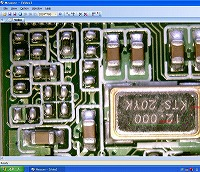This method involves illuminating the sample and observing it solely through scattered and reflected light from the sample itself. The sample appears illuminated against a dark background. It is suitable for detecting scratches on glass, lenses, mirror surfaces, fine steps, and foreign particles.
<Dark-field illumination device>
If observing in a simplified manner,
purchasing a commercially available simple dark-field illumination device |
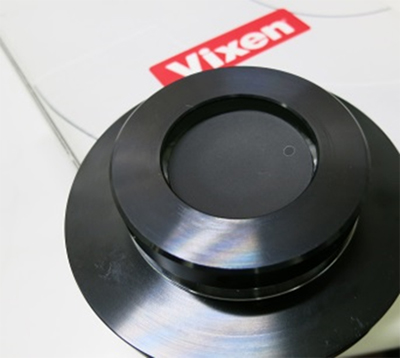
|
| Attaching it to a regular transmitted illumination stand allows for low-cost dark-field observation.
|
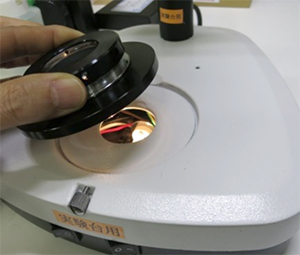 |
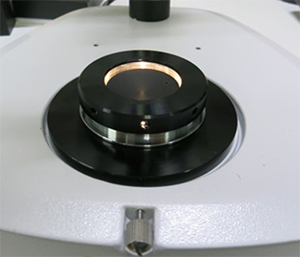
|
| |
|
| When using this setup to observe metal surfaces with unevenness (like a coin) and transparent objects (like lenses),
|
<1 yen coin>
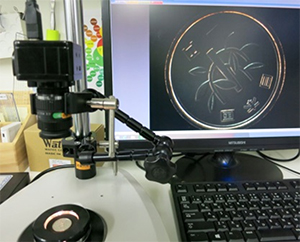 |
<Lens>
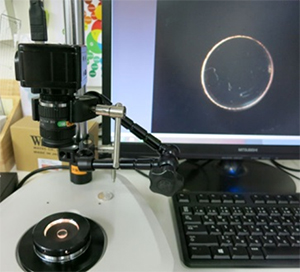 |
| With this method, the available light intensity is quite limited, and it becomes unusable at slightly higher magnifications. |
| |
|
|
<Low-angle LED illumination>
Therefore, a recommended method is to use low-angle LED ring illumination with a black background.
|
Low-angle LED ring illumination
GR56-N
|
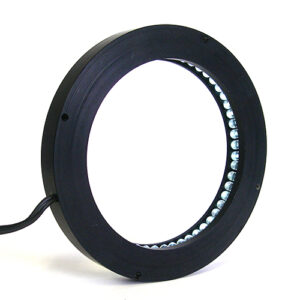 |
| |
|
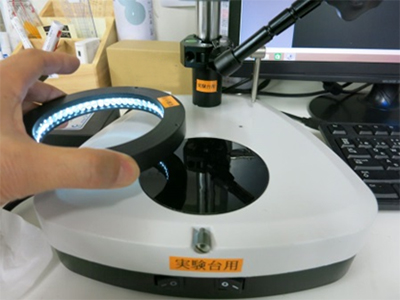 |
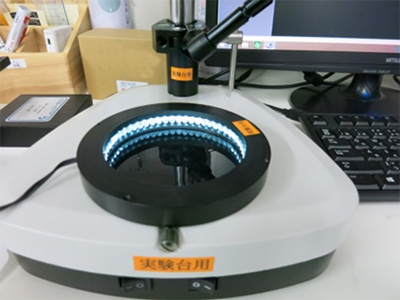 |
| |
|
| I observed the same samples (1 yen coin & lens) using this lighting.
|
<1円玉>
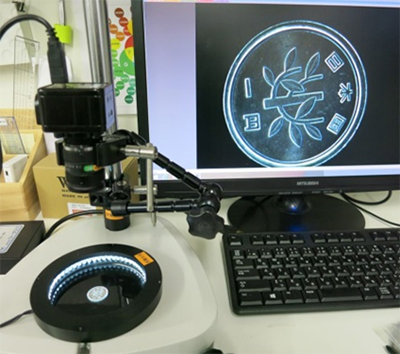 |
<レンズ>
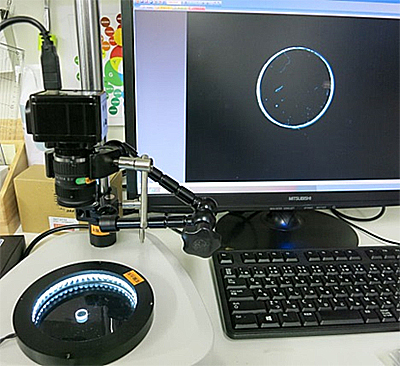 |
| |
|
| Images similar to dark-field illumination can be obtained. The illumination intensity is strong, and there is ample space to place the objects of interest.
I will display a photo of the lens that I actually took. On the left is a dark field illumination device, and on the right is an observation with a low-angle LED ring light.
|
| <Dark-field illumination device> |
<Low-angle LED ring illumination> |
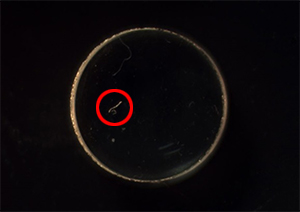 |
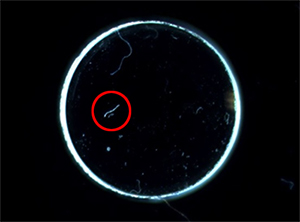 |
Summary:
Dark-field observation involves illuminating the sample and observing it solely through scattered and reflected light.
However, with dark-field observation, the available light intensity is quite limited, and it becomes unusable at slightly higher magnifications.
Therefore, a recommended method is to use low-angle LED ring illumination with a black background.













